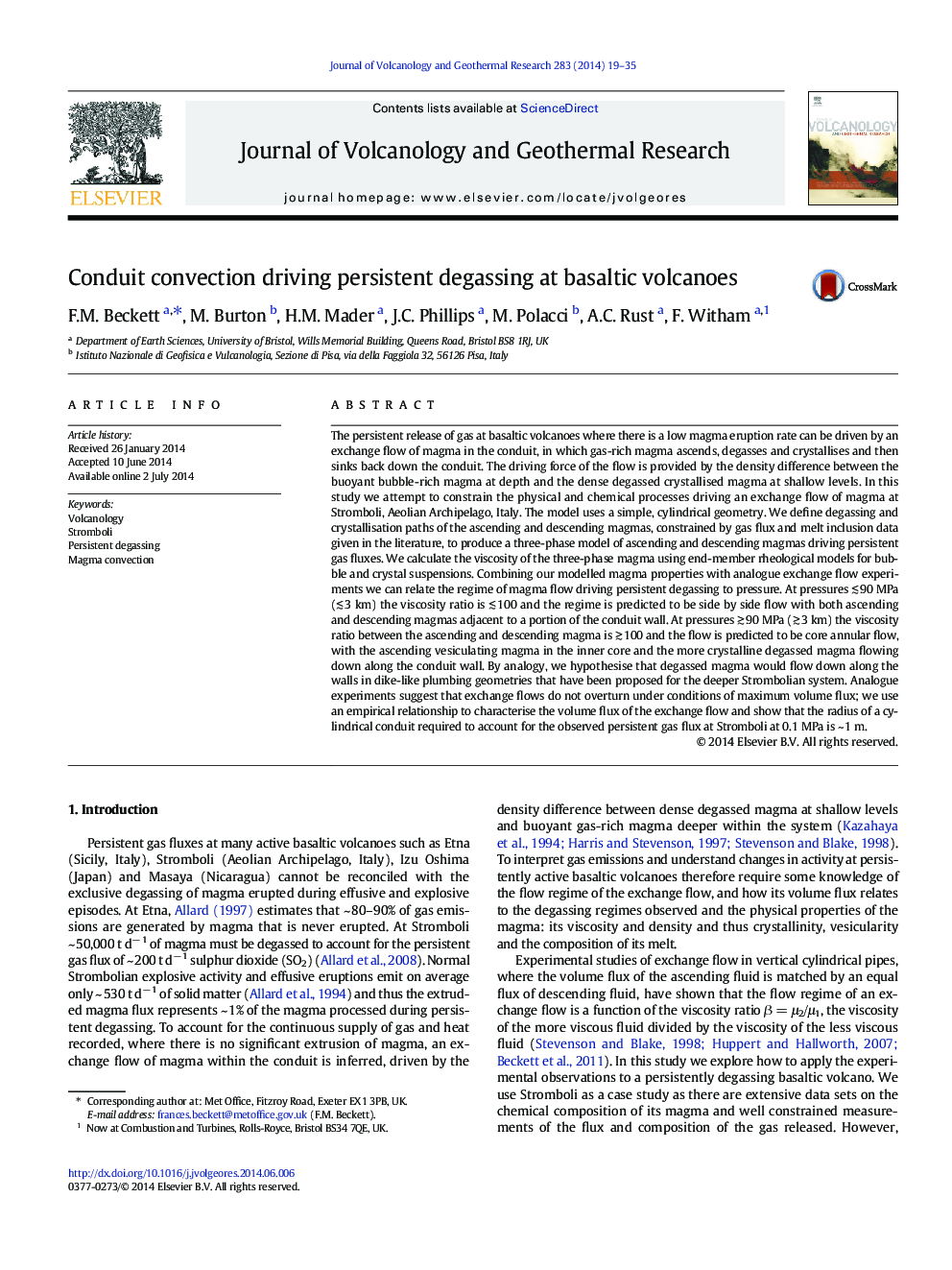| کد مقاله | کد نشریه | سال انتشار | مقاله انگلیسی | نسخه تمام متن |
|---|---|---|---|---|
| 4712366 | 1638339 | 2014 | 17 صفحه PDF | دانلود رایگان |
• Application of experimental observations of exchange flow to a basaltic volcano
• A three-phase model of overturning magma driving persistent gas fluxes at Stromboli
• The flow regime of overturning magma at Stromboli defined as a function of pressure
The persistent release of gas at basaltic volcanoes where there is a low magma eruption rate can be driven by an exchange flow of magma in the conduit, in which gas-rich magma ascends, degasses and crystallises and then sinks back down the conduit. The driving force of the flow is provided by the density difference between the buoyant bubble-rich magma at depth and the dense degassed crystallised magma at shallow levels. In this study we attempt to constrain the physical and chemical processes driving an exchange flow of magma at Stromboli, Aeolian Archipelago, Italy. The model uses a simple, cylindrical geometry. We define degassing and crystallisation paths of the ascending and descending magmas, constrained by gas flux and melt inclusion data given in the literature, to produce a three-phase model of ascending and descending magmas driving persistent gas fluxes. We calculate the viscosity of the three-phase magma using end-member rheological models for bubble and crystal suspensions. Combining our modelled magma properties with analogue exchange flow experiments we can relate the regime of magma flow driving persistent degassing to pressure. At pressures ≲ 90 MPa (≲ 3 km) the viscosity ratio is ≲ 100 and the regime is predicted to be side by side flow with both ascending and descending magmas adjacent to a portion of the conduit wall. At pressures ≳ 90 MPa (≳ 3 km) the viscosity ratio between the ascending and descending magma is ≳ 100 and the flow is predicted to be core annular flow, with the ascending vesiculating magma in the inner core and the more crystalline degassed magma flowing down along the conduit wall. By analogy, we hypothesise that degassed magma would flow down along the walls in dike-like plumbing geometries that have been proposed for the deeper Strombolian system. Analogue experiments suggest that exchange flows do not overturn under conditions of maximum volume flux; we use an empirical relationship to characterise the volume flux of the exchange flow and show that the radius of a cylindrical conduit required to account for the observed persistent gas flux at Stromboli at 0.1 MPa is ~ 1 m.
Journal: Journal of Volcanology and Geothermal Research - Volume 283, 15 August 2014, Pages 19–35
